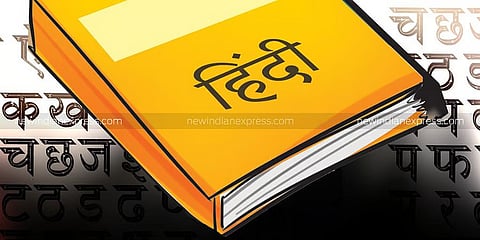

Hindi is like the Aurangazeb of Indian languages. The Mughal emperor was ruthless when he aggressively stretched the borders into the Deccan and beyond. History tells us that both have been expansionists and steamrolled rivals into insignificance. Delhi’s noble intention has been to ‘unify’ India that lay ‘tukde-tukde’ by a legion of regional languages. With a unifier — that’s Hindi.
For southern states, Hindi had already ceased to hold the old charm. They have been busy exporting techies, doctors, nurses, and teachers in huge numbers to foreign lands and earning dinars and dollars (ignore Trump’s new remittance law). Job markets in Mumbai and Delhi no longer fascinate them. And for the hardcore Bollywood fans, the Khans have begun to speak in Tamil and Malayalam in the new digital era. The two prime reasons to try out Hindi have thus died a natural death.
New Delhi clarified that the National Education Policy did not compel anyone to teach Hindi. It only wants every Indian to learn three languages. It can be Sanskrit (like some of the big northern states have now decided to go for) or any other Indian language. Quite big-hearted in its approach. All schools run by the central government (CBSE and KV) chose to teach Hindi as the third language, citing convenience.
Given that a lot of Indian students are migrating to foreign universities for higher studies, can they opt for Spanish, German, French, Arabic, or Chinese as their third language? The quick retort comes with a snub: it is more about one’s culture and values. Not everyone is a linguaphile. Some love to learn languages; some do not.
The 3-language policy can’t stake a claim in PV Narasimha Rao’s scholarly skill to converse in 15 languages. Neither did the 3-language regime in Kerala play any role in KS Chithra singing in 20 languages as diverse as Awadhi, Badaga, Braj, Banjara, Assamese, and Manipuri. Despite being a 3-language policy kid and scoring 90% marks in Hindi in my SSC, I struggled to speak the language when I landed in Mumbai in search of a job in the nineties. After three decades in the city, all I managed to do was speak broken Hindi with a heavy ‘Madrasi’ accent. Most Tamilians I came across in Mumbai spoke reasonably good Hindi without subjecting themselves to the torture of a third, alien language back in their school.
When TNIE published an exclusive story last week that 84,000 underprivileged students will not get to study in private schools through the RTE window, there was muted anger. The centre has choked education funds to the disobedient TN for sticking to its 2-language policy and opposing the NEP. Apart from RTE reimbursements, it also jeopardised teachers’ salaries, student welfare programmes, and free transport for students in remote areas. The state government has now knocked at the Supreme Court’s door for justice.
The reiteration of the demand of a 50% share of taxes by TN comes as a natural corollary. After the ‘presidential reference’ gave the opposition-ruled states a new platform to rally on, the tax demand may turn out to be another national issue. When states are forced to approach courts routinely to receive their rightful share of funding, the cooperative federal structure of the country is bound to crumble.
States are struggling for funds after the GST took away almost all potential avenues of tax collections. MK Stalin claimed the states have received only 33.16% of the centre’s gross tax revenue despite a recommendation by the Finance Commission to hike their share (in the divisible pool of central taxes) to 41%. While tax devolution from the centre is on the decline, states’ contribution to the centrally sponsored schemes is rising, further straining state finances. This is like getting trapped between the devil and the deep sea.
Cooperative federalism is passé, and double-engine governance is the new buzzword. Imagine an India with all double-engine sarkars across the country! One nation, one ruling party. Will Amrit Kaal redefine ‘democracy’ forever?